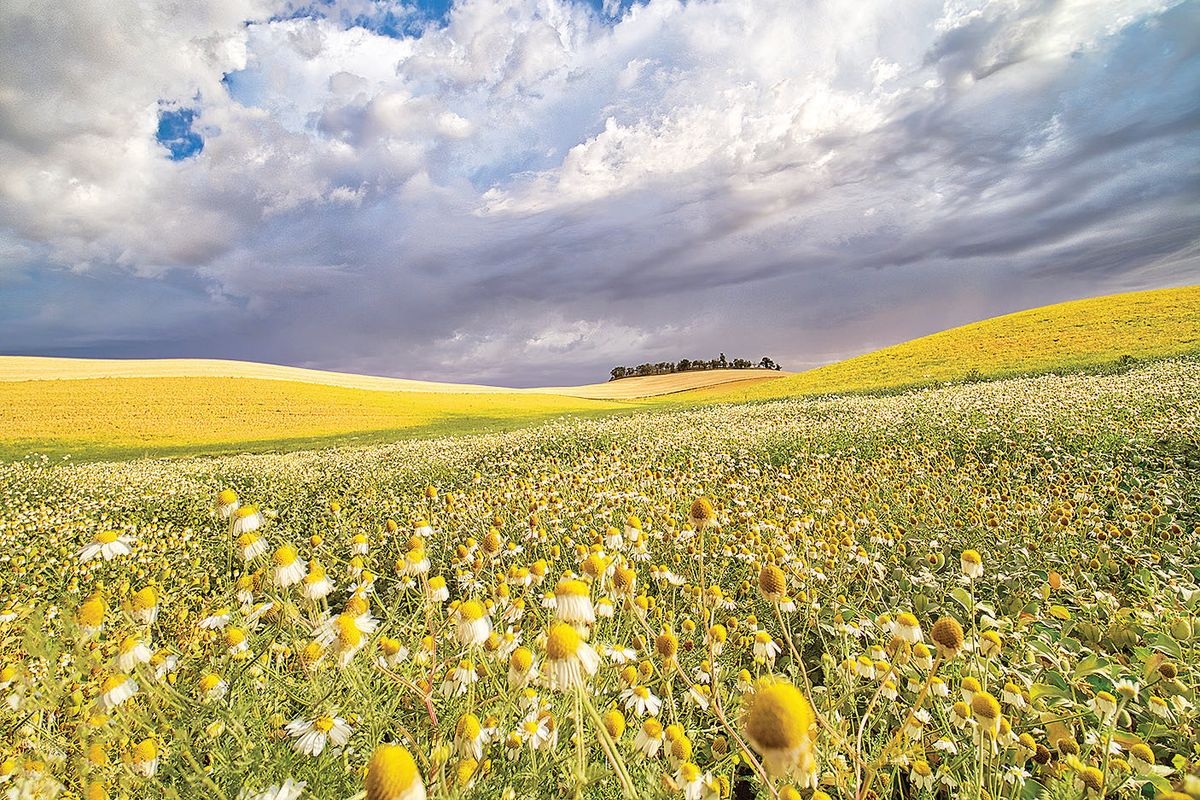Planting the Future: The Phoenix Conservancy repairs and restores the forgotten Palouse Prairie

PULLMAN – Weeds had overrun the 60-foot hill behind Jacob Leachman’s house. Unsure what to do, Leachman reached out to a local nonprofit that plants “pocket prairies” in backyards and empty fields.
The Phoenix Conservancy Project sent volunteers to remove the weeds and plant native species.
“I now have over 90 different native plant species that have been documented on the hill that used to just be a massive eyesore,” said Leachman, who has lived in Pullman his entire life. “It’s incredibly gratifying to look outside and say ‘I was able to make a difference.’ ”
The native plants of Palouse Prairie once covered much of southeastern Washington and adjacent parts of Idaho. Today, less than 0.5% of the Palouse Prairie is still intact, making it one of the most endangered ecosystems in the country, according to the Phoenix Conservancy, a nonprofit dedicated to restoring endangered ecosystems. The region’s agriculture and development disrupted many native species like Spalding’s Catchfly, a federal threatened species, as well as Palouse goldenweed and broad-fruit mariposa.
Pocket prairies contain a collection of plants native to the Palouse area. As small as a backyard, such pockets provide natural habitats for plants and native pollinators.
“What we need to do is make sure that wildlife has some sort of hopping points between all those places,” said Shannon Collins, the Palouse Prairie project manager at the Phoenix Conservancy. “Our next step is to hopefully start restoring roadsides.”
In two years, the number of private restoration sites increased from two to 32, Collins said. The nonprofit hopes to add 15 to 20 this year. Currently, the Phoenix Conservancy schedule is full.
In addition to supporting native species, the pockets can also lower water bills, according to Chris Duke, executive director of the Phoenix Conservancy. They also can help prevent erosion, retain soil moisture, and support nutrients.
“Not only are native plants beneficial for the local environment, but they are also low maintenance,” Duke said.
Jenny Carlson, a volunteer at the Pullman Depot Heritage Center, opted for a minimal package of nine native plants and pollinating flowers for an embankment on their property. The package includes Idaho fescue, bluebunch wheatgrass and blanket flower among other species.
“We needed something that would look good with less maintenance, less manual labor and supported our local identity,” Carlson said. “Chris pointed out since we’re a Historical Society, there’s absolutely nothing more historical in terms of landscaping than the plants that would have been here long before settlers ever even came.”
Collins said the lack of native seeds can also make selection difficult – and costly.
“We get plants and seeds from a number of different places. We tend to purchase from local nurseries like Rose Creek or Plants of the Wild, but right now it’s tough because there’s a shortage of plants and seeds,” Collins said.
Native seeds can be ethically collected but it can be time-consuming and tricky, so the nonprofit began growing its own plants for seed.
“We have our own greenhouse operation and we do use seeds we collect so we can grow a nice diversity of plants for the future,” Collins said.
The Phoenix Conservancy plans on working with the Department of Transportation to help create prairie habitats along roadsides, Collins said. Roadsides tend to be infested with weeds, and replacing them with Palouse Prairie habitat would be a leap forward.
Collins also said she plans on working with farmers and big landowners to create strips of gooseberry habitat on land that would otherwise go unused.
“If you have a small space or a pot on your patio, plant some native flowers,” said Collins. “Having a place to stop and eat some food before they continue on to the next little Prairie patch is really important.”